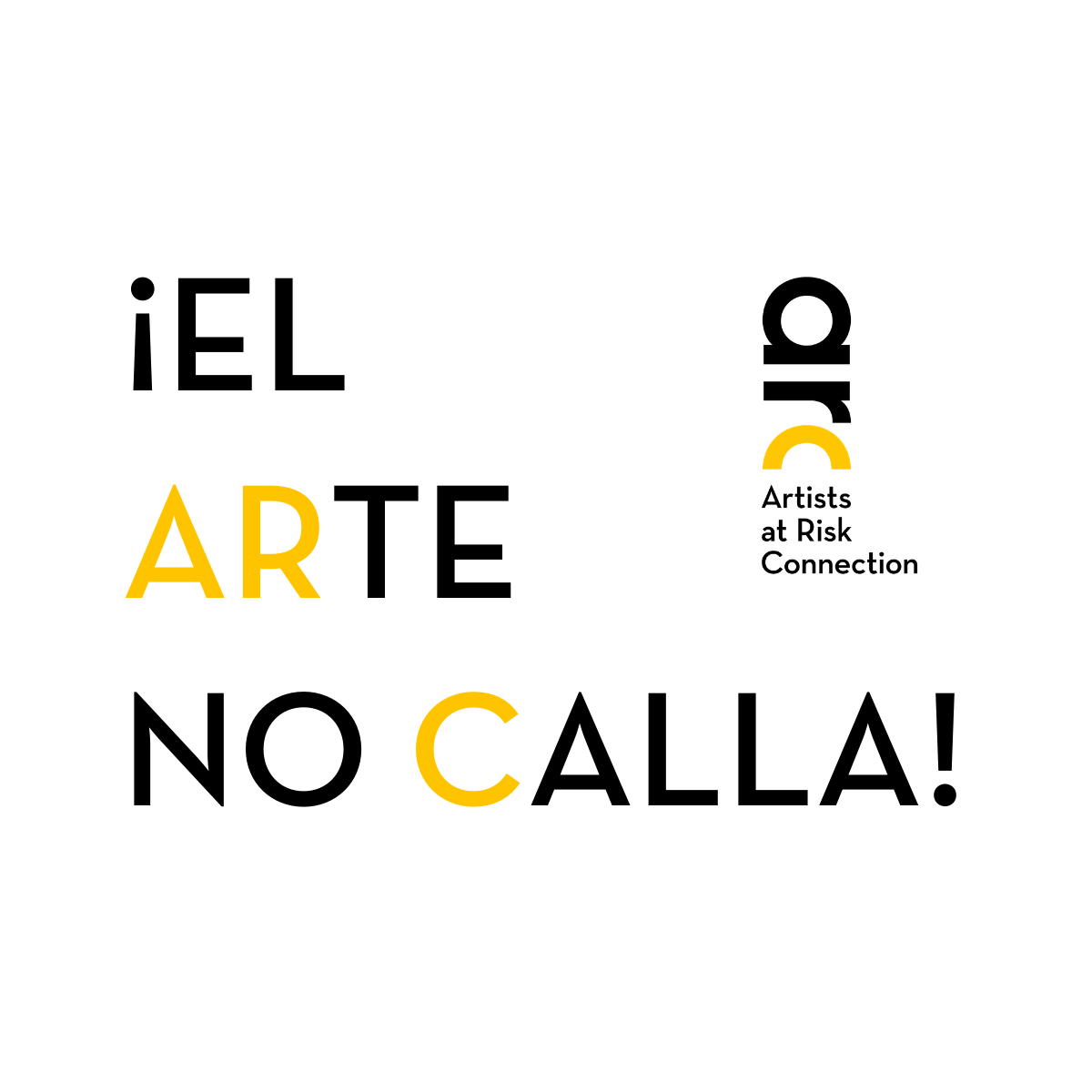Hamlet Lavastida
Visual Artist
Cuba
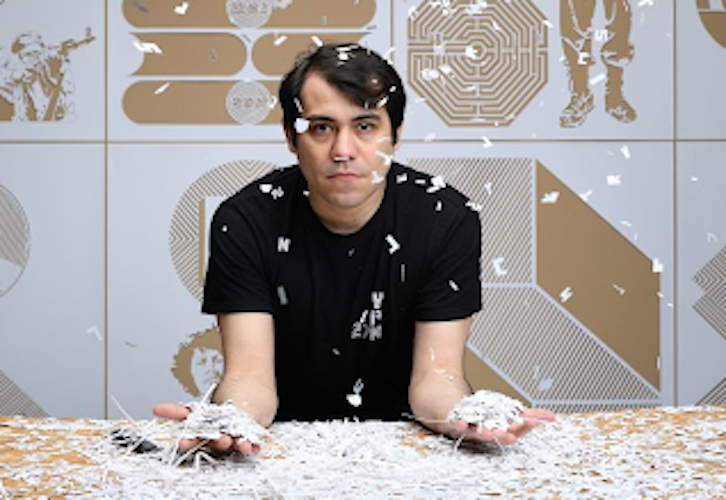
In June 2021, Cuban artist and activist Hamlet Lavastida returned to Cuba after completing a residency at the Künstlerhaus Bethanien in Berlin, Germany. On the sixth day of a state-mandated quarantine for COVID-19 at a center in Havana, Lavastida was abruptly and arbitrarily detained by state security forces and transferred to Villa Marista, a state prison in Havana, where he remained until his release and forced exile in September 2021.
Lavastida has been an influential figure in the 27N movement, a group of independent artists and writers fighting for free expression on the island, whose work interrogates the rhetoric and propaganda used by the Cuban government. He, like many of his contemporaries, has been repeatedly targeted by the state in a systematic effort to quash political activists protesting the Díaz-Canel government and suppress freedom of expression on the island.
Lavastida was born in Havana, Cuba in 1983 and graduated from the Superior Institute of Art in Havana in 2009. His work focuses on integrating art into the fields of history, ideology, and collective memory. He typically works from paper cutouts carved by X Acto knives. His work has been exhibited internationally in Tokyo, Rio de Janeiro, Chicago, and New York, among other cities. He has participated in an exhaustive number of artist residencies, including in Cuba, Poland, and Canada. He served as an artist-in-residence at the Künstlerhaus Bethanien, Berlin, where he presented his project “Cultura Profiláctica” (Prophylactic Culture) in April 2021.
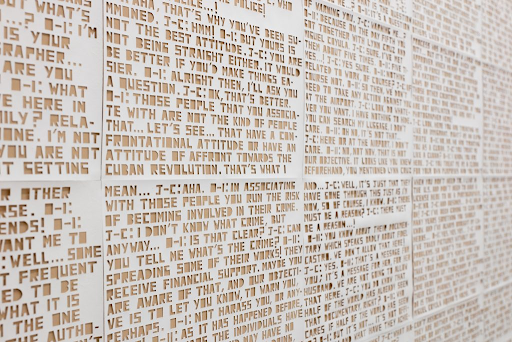
A detailed view of Hamlet Lavastida’s project “Cultura Profiláctica” on view at Künstlerhaus Bethanien, Berlin. Photo: David Brandt. Courtesy of the artist.
His exhibition juxtaposed transcripts of photographer Javier Caso’s 2020 interrogation by state agents, an audio recording Caso secretly made and leaked to the media, and a letter by the poet Heberto Padilla, which he wrote to the revolutionary government following his detainment for “counter-revolutionary activities” in 1971. Lavastida also included a compilation of testimonies drawn from archives from the 1960s, when socialism first took root in Cuba. Lavastida’s efforts to piece together this historical memory calls for a critical reexamination of Cuba’s past in light of the continual targeting of artistic expression.
Lavastida’s arrest on June 26, 2021 – carried out at 9:50 in the morning, with unsubstantiated charges and little information given to his family – was emblematic of a broad crackdown on artistic expression across Cuba.
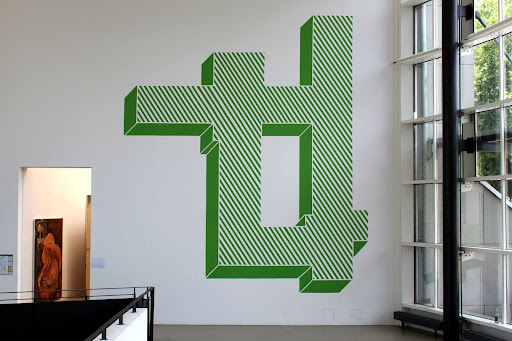
República Penitenciaria, Villa Marista prototype, 2022. Exterior view of the mural included in the INSTAR project at Documenta Halle, Documenta 15, Kassel, Germany, 2022.
The Cuban government has been at constant loggerheads with 27N, especially since the ratification of Decree 349 in 2018, which allows the government to decide which artworks are “appropriate” for public and private exhibition, essentially possessing a veto power over all artistic and cultural production on the island.
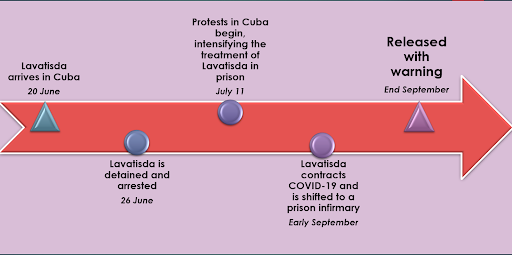
Hamlet was accused of directing other counterrevolutionaries to create a political organization to protest against the human rights abuses of state institutions. Lavastida was formally charged with “instigation to commit a crime,” which not only seemed to be duly fabricated but also inherently Kafkaesque in nature.
The government rejected Lavastida’s petition for habeas corpus on July 1, 2021. During his imprisonment, Lavastida suffered from severe depression and anxiety. The maltreatment of Lavastida and other prisoners intensified as mass demonstrations broke out across the country on July 11, because they were seen as symbols of the protest movement. Lavastisda was threatened with additional charges of “instigating rebellion,” an accusation which carries a 15-20 year sentence in Cuba. Amnesty International has called Lavastida a “prisoner of conscience.” It is indeed brave and bold voices like Lavastida’s which keep the flame of human creativity and ingenuity burning against all odds.
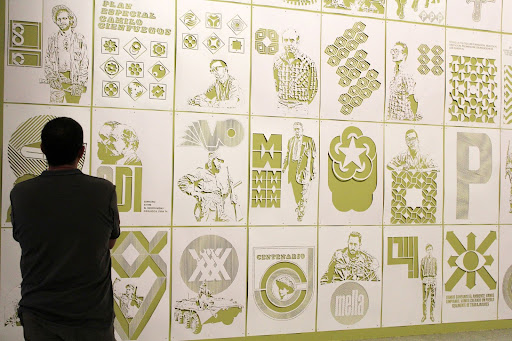
Vida Profiláctica, 2015. 44 cut paper templates on wall, 100 x 70 cm. View of the installation in the exhibition Iconocracia at Centro de Arte Contemporáneo Artium, Vitoria, ES
Speaking about his imprisonment, Lavastisda commented, “inside that world, I could see that even though the economy is in shambles and Cuban people are suffering [from] extreme poverty, the Cuban police state remains all-powerful and [continues to have] access to all the resources it needs.” Within the prison walls, Lavastida recalled, it seemed to him as if state security superseded any judicial authority, and he felt there was little to no possibility of a fair trial.
In early September 2021, Lavastida contracted COVID-19 and was moved to a prison infirmary in what would prove to be the final days of his three-month ordeal. The Cuban authorities released and extended his passport by two years – warning him that, should he return to Cuba and resume his criticism of the government, Villa Marista would be waiting for him.
Lavastida immediately flew Europe, where he completed a three-month residency at the KW Institute for Contemporary Art and subsequently began a 10-month residency at the Künstlerhaus Bethanien. As artistic repression on the island continues to intensify, the world must wonder how long the battle for artistic freedom in Cuba will last, and how many more Hamlet Lavastidas will continue to fall victim to the censorship regime.



